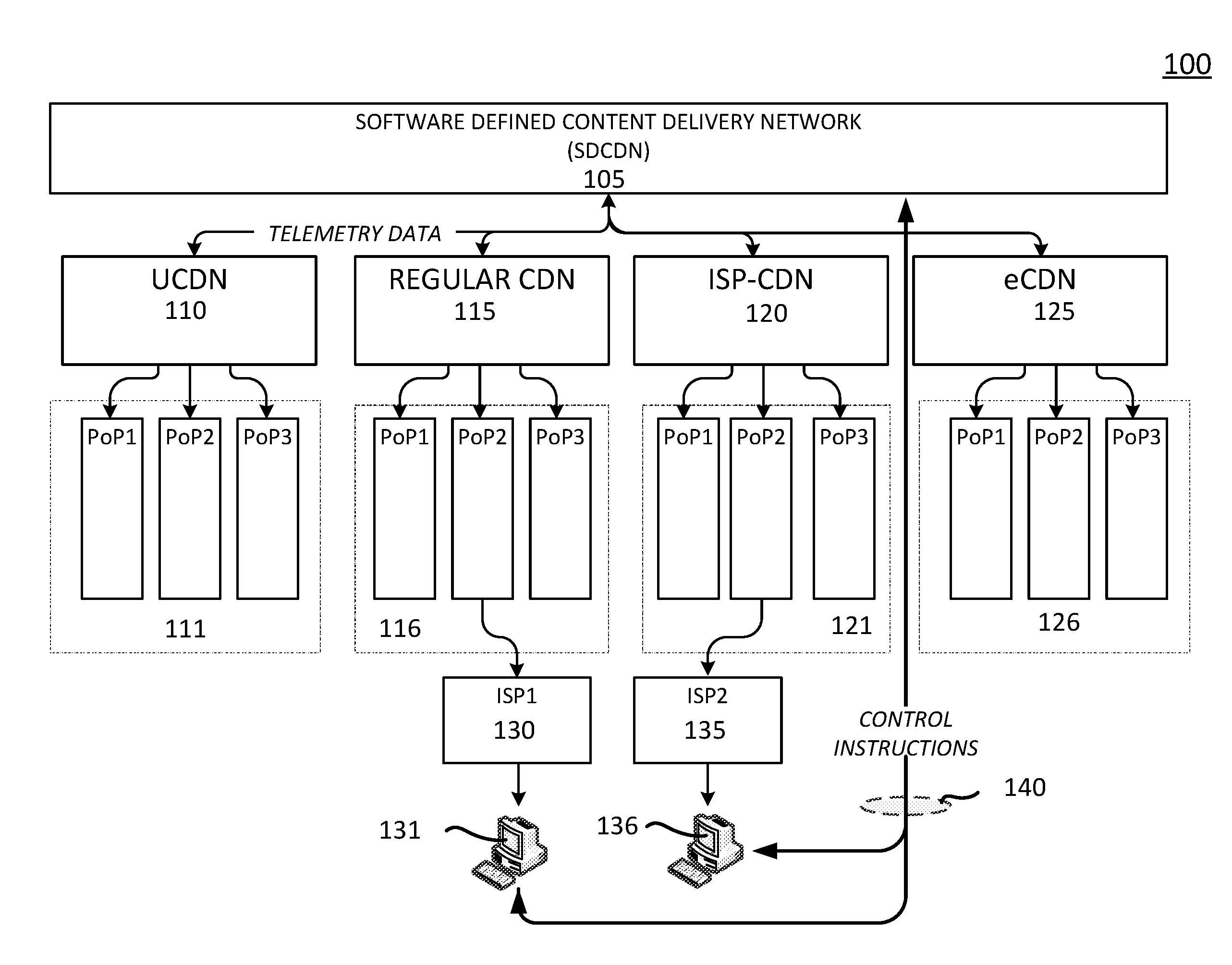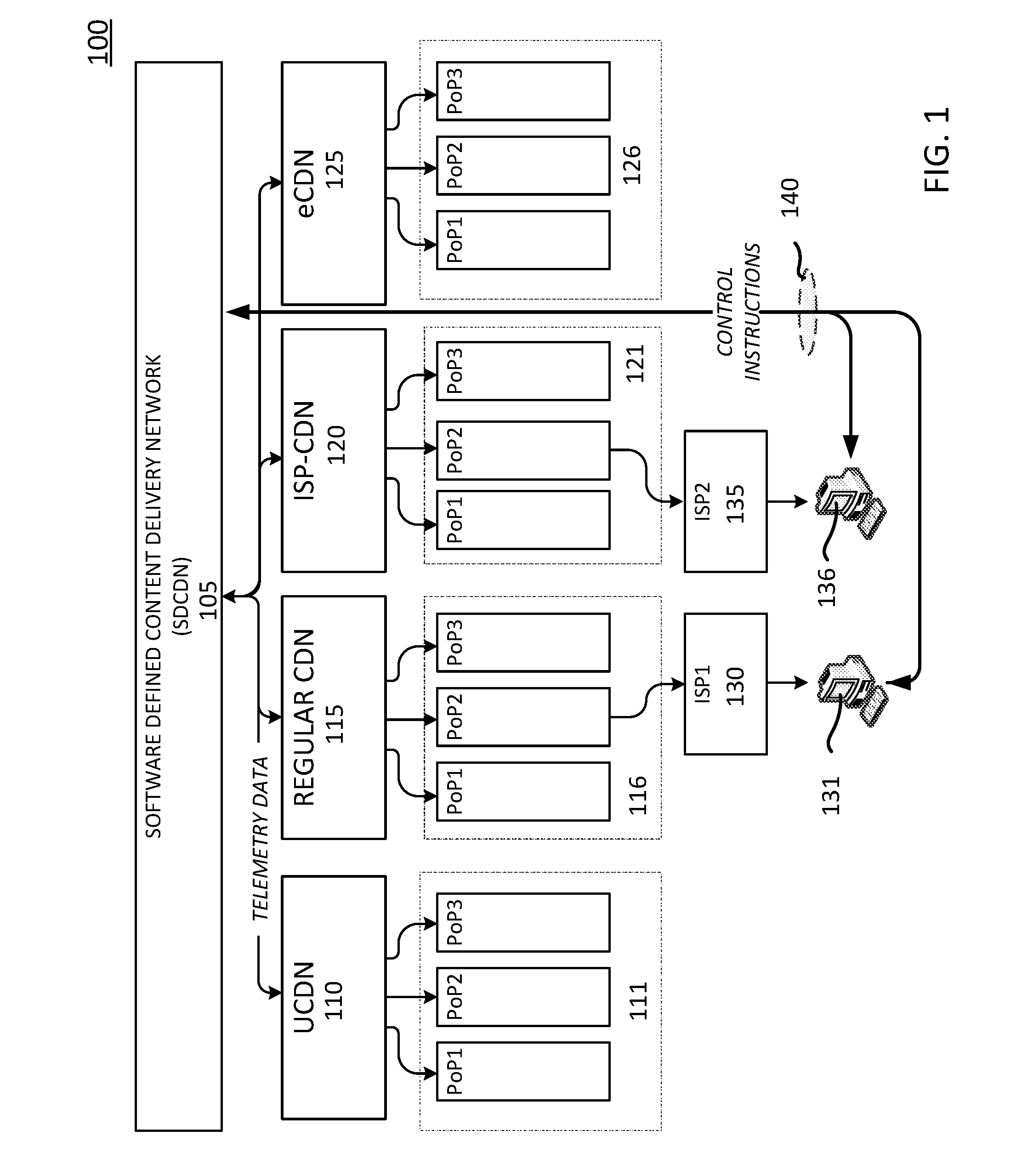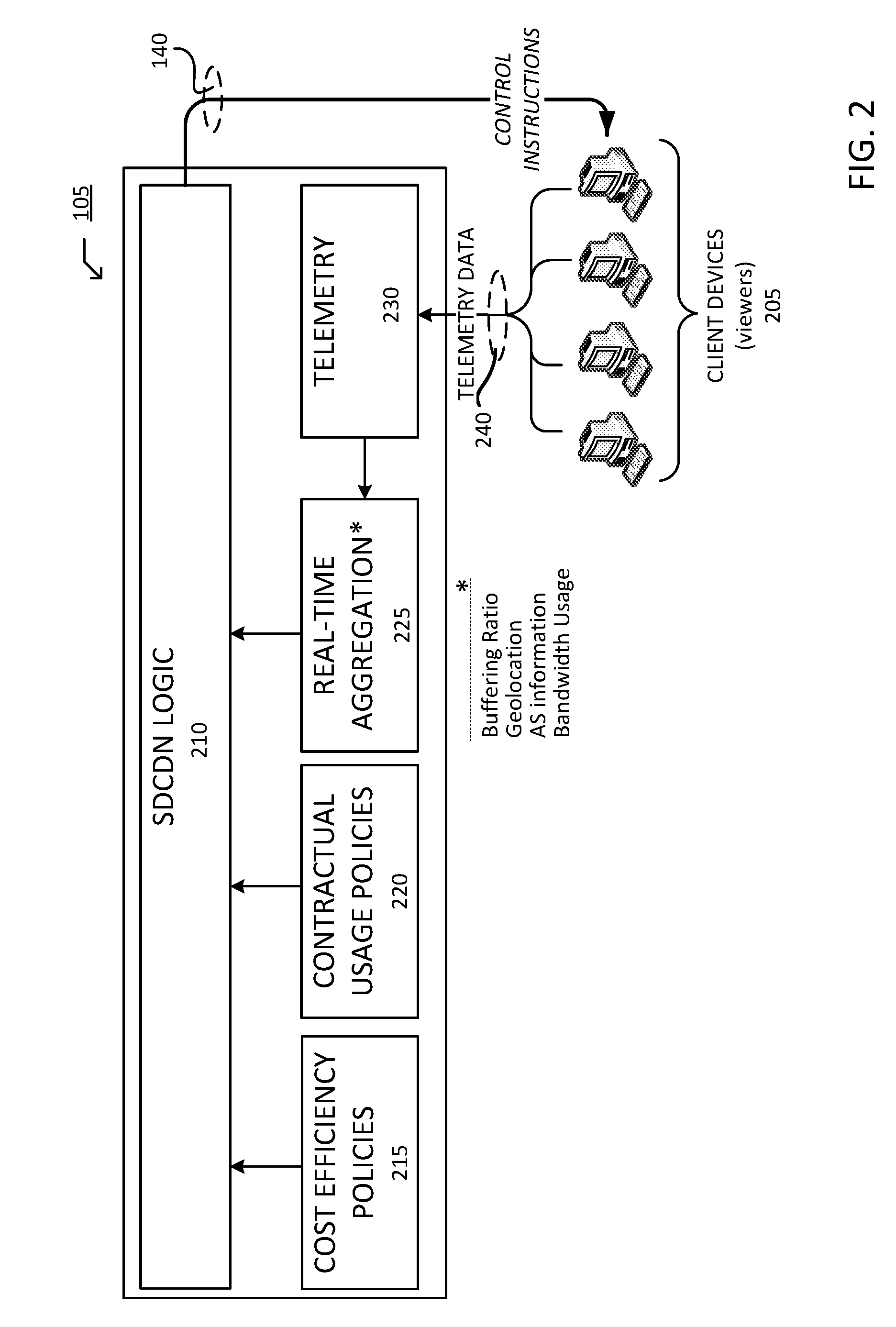Techniques for managing telemetry data for content delivery and/or data transfer networks
a technology of content delivery and data transfer network, applied in the direction of data switching network, digital transmission, electrical apparatus, etc., can solve the problems of increasing the cost of conventional telemetry data system, increasing the complexity of telemetry data collection, and increasing the complexity of conventional telemetry data collection system, so as to achieve efficient real-time data collection
- Summary
- Abstract
- Description
- Claims
- Application Information
AI Technical Summary
Benefits of technology
Problems solved by technology
Method used
Image
Examples
Embodiment Construction
[0022]The subject disclosure addresses these above-described problems implementing a software framework—preferably, integrated with application servers of the CDNs. For purposes of discussion here, the term software framework is used interchangeably with a telemetry framework. Notably, the telemetry framework may be shown as a separate layer outside of certain communication networks, however, it is to be understood that such telemetry framework is readily integrated in application servers / devices.
[0023]Referring now to the drawings, FIG. 1 illustrates an example communication network 100, including a telemetry framework represented by a software layer 105 (e.g., labeled “Software Defined Content Delivery Network (SDCDN)”). Communication network 100 illustratively shows a geographically distributed collection of sub-networks, including various Content Delivery Networks (CDNs) (e.g., UCDN 110, Regular CDN 115, ISP-CDN 120, and eCDN 125), corresponding point of presence (PoP) servers (...
PUM
 Login to View More
Login to View More Abstract
Description
Claims
Application Information
 Login to View More
Login to View More - R&D
- Intellectual Property
- Life Sciences
- Materials
- Tech Scout
- Unparalleled Data Quality
- Higher Quality Content
- 60% Fewer Hallucinations
Browse by: Latest US Patents, China's latest patents, Technical Efficacy Thesaurus, Application Domain, Technology Topic, Popular Technical Reports.
© 2025 PatSnap. All rights reserved.Legal|Privacy policy|Modern Slavery Act Transparency Statement|Sitemap|About US| Contact US: help@patsnap.com



